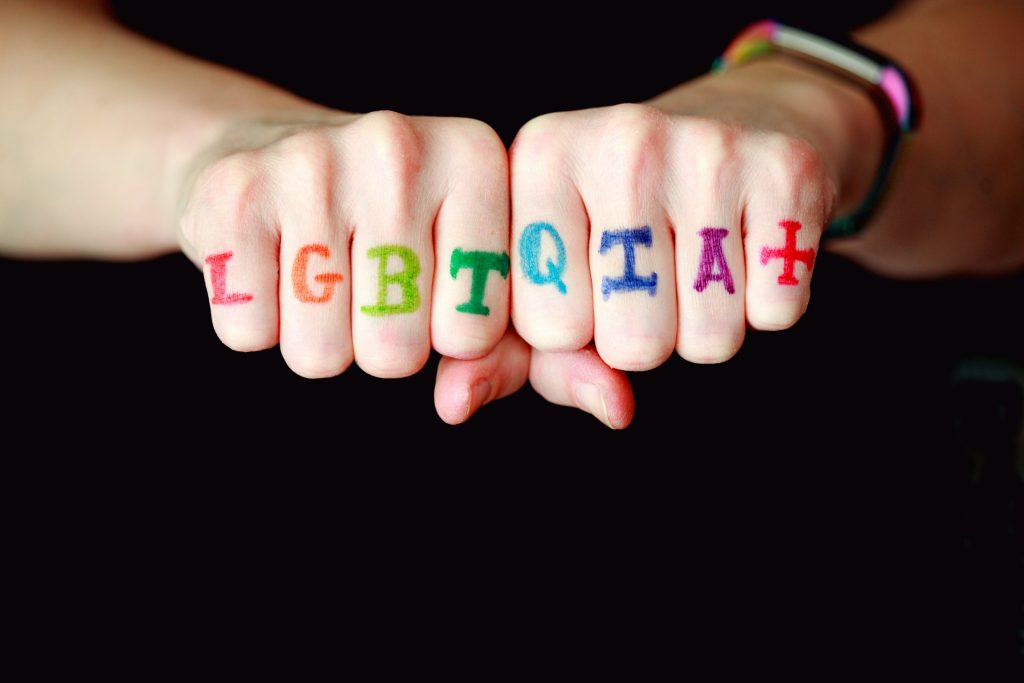
Most analysis on consuming problems (EDs) amongst adolescents has centered on cisgender people, whose gender identification aligns with their beginning task (Mensinger et al., 2020; Riddle et al., 2024). Restricted analysis has examined non-binary and transgender or gender various (TGD) adolescents, leading to a scarcity of ED-related data and interventions tailor-made to those teams.
Researchers more and more recognise that conventional ED therapies might not handle TGD people’ distinctive experiences, akin to increased prevalence of comorbid psychological well being situations (Becerra-Culqui et al., 2018) and points with body-positive approaches, which can heighten gender dysphoria amongst TGD youth, moderately than enhancing physique acceptance (Duffy et al., 2016; Hartman-Munick et al., 2021). With out additional analysis, it’s inappropriate to imagine therapies efficient for cisgender sufferers can be equally efficient for TGD people.
To deal with this hole, Riddle et al. (2024) in contrast ED symptom severity, despair, suicidality, and anxiousness between cisgender and TGD adolescents at admission and discharge from increased ranges of care (HLOC) ED remedy.

There may be restricted analysis on consuming dysfunction remedy outcomes amongst transgender and gender various adolescents, making it tough to evaluate whether or not present remedy approaches (developed in cisgender populations) are applicable.
Strategies
This retrospective cohort research recruited adolescents (
The next outcomes have been measured at admission and discharge:
- Consuming problems signs (EDE-Q)
- Despair severity and suicidality (PHQ-9)
- Anxiousness signs (GAD-7)
Adjustments in ED signs, despair, suicidality, and anxiousness have been analysed utilizing paired samples t-tests with Cohen’s d calculations, adopted by logistic regressions utilizing odds ratios (ORs) and sensitivity analyses.
Outcomes
Out of 1,444 people, 617 accomplished each admission and discharge measures: 573 (92.9%) have been cisgender (84.4% feminine) and 44 (7.1%) have been TGD (28 non-binary, 15 trans-male, 1 trans-female).
Principal findings
- ED signs improved considerably following interventions (cisgender: t = 18.84, p d = .79; TGD: t = 6.50, p d = .98), with no vital variations in cisgender and TGD particular person’s ranges at admission (p = .09) or discharge (p = .48).
- Depressive signs decreased considerably following interventions (cisgender: t = 13.60, p d = .57; TGD: t = 5.29, p d = .80) to the same extent for each teams (unadjusted: p = .42, adjusted: p = .29), though TGD had increased despair at admission (p p
- Suicidality decreased considerably following interventions, (cisgender: t = 4.00, p d = .17; TGD: t = 4.70, p d = .71) to the same extent for each teams (unadjusted: p = .93; adjusted: p = .80), though TGD adolescents had increased suicidality at admission (p p = .02).
- Anxiousness signs decreased considerably following interventions (cisgender: t = 10.01, p d = .42; TGD: t = 2.68, p = .01, d = .40) to the same extent for each teams (unadjusted: p = .14; adjusted: p = .06), though TGD people had increased anxiousness at admission (p = .06) and discharge (p = .02).
Sensitivity analyses
Outcomes remained comparable after excluding 19% (n = 117) of cisgender individuals who have been in inpatient care or had a analysis of bulimia nervosa.

Outcomes confirmed consuming dysfunction, despair, suicidality and anxiousness signs improved equally for cisgender and transgender and gender various adolescents following interventions.
Conclusions
Opposite to hypotheses, transgender or gender various (TGD) adolescents confirmed comparable consuming problems (ED) symptom enhancements to cisgender adolescents, which inserts with grownup findings on this space (Riddle et al., 2022). Nonetheless, they did have increased anxiousness, despair, and suicidality scores each earlier than and after the intervention.
This means that whereas ED therapies could also be equally efficient for cis and TGD adolescents, TGD adolescents may have continued assist post-discharge to deal with extra extreme comorbidities.

While transgender and gender various adolescents’ signs improved at comparable charges to cisgender adolescents, ranges of tension, despair and suicidality signs remained elevated at discharge.
Strengths and limitations
Strengths
- Statistical rigor and comparability: Riddle et al. (2024) demonstrated sturdy statistical rigour with logistic regressions, the place they managed for admission scores, comorbidities, degree of care and intercourse assigned for beginning. This strengthens claims that TGD people profit equally to cisgender people from ED interventions by displaying comparable remedy outcomes regardless of TGD adolescents’ demographic variations.
- Enhanced inner validity: Sensitivity analyses excluded cisgender people in inpatient care or with bulimia nervosa. This bolstered the inner validity of the findings and confirmed that the upper presence of inpatient care and bulimia within the cisgender group didn’t considerably have an effect on remedy outcomes, as outcomes remained according to the complete pattern. This means good replicability of the research findings.
Limitations
- Lengthy-term measures: The absence of long-term follow-up limits understanding of the sustained advantages from HLOC ED remedy, stopping assumptions that long-term remedy results for cisgender adolescents (Fischer et al., 2014) apply to TGD adolescents. A longitudinal comparability is required to verify that cisgender and TGD each present comparable sustained advantages.
- Causality: As that is an observational research with a small pattern, replications are wanted to make clear if elevated comorbidities pre-treatment and post-discharge are frequent amongst all TGD people in HLOC ED remedy or simply amongst these referred for remedy within the research. This could point out whether or not adjunctive assist for comorbidities is all the time advisable in care of TGD adolescents, or a consideration solely on this pattern.
- Attrition: Many people with barely completely different admission scores from the analytic pattern additionally didn’t full discharge measures. The scientific significance of this distinction is unknown, elevating issues in regards to the replicability and generalisability of the research’s total findings. Additional analysis is required to assist that ED interventions equally profit TGD and cisgender adolescents.
- Small pattern measurement and restricted energy: The small TGD pattern measurement limits detection of refined variations and within-group variations (e.g., between non-binary and transgender people), hindering the exploration of variations in remedy outcomes amongst gender-diverse people (Streed Jr et al., 2018). This implies the authors can’t present particular steerage for the differential remedy issues within the care of transgender and non-binary adolescent ED sufferers.
- Measurement validity: The measures for suicidality, despair, and anxiousness used within the research haven’t been extensively validated for TGD people (Holt et al., 2019; Moyer et al., 2019), elevating issues about their reliability and accuracy in capturing these signs on this inhabitants. This highlights the necessity for additional validation of those measures earlier than they might be used to guage the advantages of ED interventions for TGD adolescents in future analysis.

Whereas Riddle et al. (2024) used sturdy statistical strategies for his or her analyses, the small pattern measurement of transgender and gender various people limits the power to detect between-group variations and determine within-group variations.
Implications for apply
Remedy efficacy and adjunctive interventions
- The research suggests comparable efficacy of ED therapies throughout cisgender and TGD adolescents. Nonetheless, sustained elevations in despair, anxiousness, and suicidality amongst TGD people underscore the necessity for adjunctive interventions tailor-made to deal with TGD’s adolescents distinctive challenges (e.g., gender dysphoria, heightened self-harm and suicidality; Donaldson et al., 2018).
- Adjunctive hormonal remedy might improve ED remedy and profit depressive temper in transgender people, and may very well be worthy of consideration (Riddle & Safer, 2022).
- Adjunctive rest remedy has proven some profit in cisgender ED remedy (McComb & Clopton, 2003), and may convey some advantages for TGD with elevated anxiousness, though this requires extra exploration.
- Clinicians may contemplate screening TGD adolescents for elevated comorbidities, making referrals to related providers (e.g., referring people with excessive despair to cognitive behavioural remedy) as a part of discharge care planning.
Longitudinal research and replication
- Longitudinal research with bigger, extra various samples are wanted to grasp the long-term efficacy of ED remedy, and to delineate refined variations in remedy responses between cisgender and TGD adolescents.
- Regardless of the small pattern measurement on this research, the authors inspired the evaluation and publication of research with small samples as an method to fight the dearth of literature on this space.
Intersectionality
- It’s instructed that cultural norms might affect gendered physique beliefs and consequently have an effect on remedy responses (Gordon et al., 2010; Townsend et al., 2012), which warrants additional analysis.
- Nonetheless, analyzing the interplay between racial and ethnic identification in ED remedy would require bigger, extra various samples.
Measurement validity
- Future analysis ought to validate normal measures for TGD people to make sure dependable and correct measurement of symptom severity.
- Together with remedy satisfaction and gender dysphoria measures in future analysis may additionally present a extra complete understanding of remedy efficacy because of proof that even when consequence measures for TGD and cisgender people could also be comparable, these teams typically differ by way of remedy satisfaction (Hollinsaid et al., 2020).
Assessing gender dysphoria
- Given the interaction between gender dysphoria and ED signs (Duffy et al., 2021), future analysis may additionally discover how gender dysphoria impacts within-group variations between transgender (e.g., on/off hormone substitute drugs) and non-binary adolescents’ ED remedy outcomes.

As Riddle et al. (2024) solely measured outcomes at admission and discharge, future analysis exploring variations in consuming dysfunction remedy outcomes between transgender/gender various and cisgender adolescents ought to embrace a long-term follow-up to see if results are maintained.
Assertion of pursuits
None.
Hyperlinks
Major paper
Riddle, M., Blalock, D. V., Robertson, L., Duffy, A., Le Grange, D., Mehler, P. S.,…Joiner, T. (2024). Evaluating consuming dysfunction remedy outcomes of transgender and gender various adolescents with these of cisgender adolescents. Worldwide Journal of Consuming Problems.
Different references
Becerra-Culqui, T. A., Liu, Y., Nash, R., Cromwell, L., Flanders, W. D., Getahun, D.,…Millman, A. (2018). Psychological well being of transgender and gender nonconforming youth in contrast with their friends. Pediatrics, 141(5).
Donaldson, A. A., Corridor, A., Neukirch, J., Kasper, V., Simones, S., Gagnon, S.,…Forcier, M. (2018). Multidisciplinary care issues for gender nonconforming adolescents with consuming problems: A case sequence. Worldwide Journal of Consuming Problems, 51(5), 475-479.
Duffy, M. E., Calzo, J. P., Lopez, E., Silverstein, S., Joiner, T. E., & Gordon, A. R. (2021). Measurement and assemble validity of the Consuming Dysfunction Examination Questionnaire Quick Kind in a transgender and gender various group pattern. Psychological Evaluation, 33(5), 459.
Duffy, M. E., Henkel, Ok. E., & Earnshaw, V. A. (2016). Transgender shoppers’ experiences of consuming dysfunction remedy. Journal of LGBT Points in Counseling, 10(3), 136-149.
Fischer, S., Meyer, A. H., Dremmel, D., Schlup, B., & Munsch, S. (2014). Quick-term cognitive-behavioral remedy for binge consuming dysfunction: long-term efficacy and predictors of long-term remedy success. Behaviour Analysis and Remedy, 58, 36-42.
Gordon, Ok. H., Castro, Y., Sitnikov, L., & Holm-Denoma, J. M. (2010). Cultural physique form beliefs and consuming dysfunction signs amongst White, Latina, and Black faculty girls. Cultural Variety and Ethnic Minority Psychology, 16(2), 135.
Hartman-Munick, S. M., Silverstein, S., Guss, C. E., Lopez, E., Calzo, J. P., & Gordon, A. R. (2021). Consuming dysfunction screening and remedy experiences in transgender and gender various younger adults. Consuming Behaviors, 41, 101517.
Hollinsaid, N. L., Weisz, J. R., Chorpita, B. F., Skov, H. E., Worth, M. A., & Well being, R. N. O. Y. M. (2020). The effectiveness and acceptability of empirically supported therapies in gender minority youth throughout 4 randomized managed trials. Journal of Consulting and Medical Psychology, 88(12), 1053.
Holt, N. R., Huit, T. Z., Shulman, G. P., Meza, J. L., Smyth, J. D., Woodruff, N.,…Hope, D. A. (2019). Trans collaborations scientific check-in (TC3): Preliminary validation of a scientific measure for transgender and gender various adults receiving psychological providers. Conduct Remedy, 50(6), 1136-1149.
McComb, J. J. R., & Clopton, J. R. (2003). The consequences of motion, rest, and schooling on the stress ranges of ladies with subclinical ranges of bulimia. Consuming Behaviors, 4(1), 79-88.
Mensinger, J. L., Granche, J. L., Cox, S. A., & Henretty, J. R. (2020). Sexual and gender minority people report increased charges of abuse and extra extreme consuming dysfunction signs than cisgender heterosexual people at admission to consuming dysfunction remedy. Worldwide Journal of Consuming Problems, 53(4), 541-554.
Moyer, D. N., Connelly, Ok. J., & Holley, A. L. (2019). Utilizing the PHQ-9 and GAD-7 to display screen for acute misery in transgender youth: findings from a pediatric endocrinology clinic. Journal of Pediatric Endocrinology and Metabolism, 32(1), 71-74.
Riddle, M. C., Robertson, L., Blalock, D. V., Duffy, A., Le Grange, D., Mehler, P. S.,…Joiner, T. (2022). Evaluating consuming dysfunction remedy outcomes of transgender and nonbinary people with cisgender people. Worldwide Journal of Consuming Problems, 55(11), 1532-1540.
Riddle, M. C., & Safer, J. D. (2022). Medical issues within the care of transgender and gender various sufferers with consuming problems. Journal of Consuming Problems, 10(1), 178.
Streed Jr, C. G., McCarthy, E. P., & Haas, J. S. (2018). Self-reported bodily and psychological well being of gender nonconforming transgender adults in the USA. LGBT Well being, 5(7), 443-448.
Townsend, L., Gearing, R. E., & Polyanskaya, O. (2012). Affect of well being beliefs and stigma on selecting web assist teams over formal psychological well being providers. Psychiatric Companies, 63(4), 370-376.
Photograph credit

Most analysis on consuming problems (EDs) amongst adolescents has centered on cisgender people, whose gender identification aligns with their beginning task (Mensinger et al., 2020; Riddle et al., 2024). Restricted analysis has examined non-binary and transgender or gender various (TGD) adolescents, leading to a scarcity of ED-related data and interventions tailor-made to those teams.
Researchers more and more recognise that conventional ED therapies might not handle TGD people’ distinctive experiences, akin to increased prevalence of comorbid psychological well being situations (Becerra-Culqui et al., 2018) and points with body-positive approaches, which can heighten gender dysphoria amongst TGD youth, moderately than enhancing physique acceptance (Duffy et al., 2016; Hartman-Munick et al., 2021). With out additional analysis, it’s inappropriate to imagine therapies efficient for cisgender sufferers can be equally efficient for TGD people.
To deal with this hole, Riddle et al. (2024) in contrast ED symptom severity, despair, suicidality, and anxiousness between cisgender and TGD adolescents at admission and discharge from increased ranges of care (HLOC) ED remedy.

There may be restricted analysis on consuming dysfunction remedy outcomes amongst transgender and gender various adolescents, making it tough to evaluate whether or not present remedy approaches (developed in cisgender populations) are applicable.
Strategies
This retrospective cohort research recruited adolescents (
The next outcomes have been measured at admission and discharge:
- Consuming problems signs (EDE-Q)
- Despair severity and suicidality (PHQ-9)
- Anxiousness signs (GAD-7)
Adjustments in ED signs, despair, suicidality, and anxiousness have been analysed utilizing paired samples t-tests with Cohen’s d calculations, adopted by logistic regressions utilizing odds ratios (ORs) and sensitivity analyses.
Outcomes
Out of 1,444 people, 617 accomplished each admission and discharge measures: 573 (92.9%) have been cisgender (84.4% feminine) and 44 (7.1%) have been TGD (28 non-binary, 15 trans-male, 1 trans-female).
Principal findings
- ED signs improved considerably following interventions (cisgender: t = 18.84, p d = .79; TGD: t = 6.50, p d = .98), with no vital variations in cisgender and TGD particular person’s ranges at admission (p = .09) or discharge (p = .48).
- Depressive signs decreased considerably following interventions (cisgender: t = 13.60, p d = .57; TGD: t = 5.29, p d = .80) to the same extent for each teams (unadjusted: p = .42, adjusted: p = .29), though TGD had increased despair at admission (p p
- Suicidality decreased considerably following interventions, (cisgender: t = 4.00, p d = .17; TGD: t = 4.70, p d = .71) to the same extent for each teams (unadjusted: p = .93; adjusted: p = .80), though TGD adolescents had increased suicidality at admission (p p = .02).
- Anxiousness signs decreased considerably following interventions (cisgender: t = 10.01, p d = .42; TGD: t = 2.68, p = .01, d = .40) to the same extent for each teams (unadjusted: p = .14; adjusted: p = .06), though TGD people had increased anxiousness at admission (p = .06) and discharge (p = .02).
Sensitivity analyses
Outcomes remained comparable after excluding 19% (n = 117) of cisgender individuals who have been in inpatient care or had a analysis of bulimia nervosa.

Outcomes confirmed consuming dysfunction, despair, suicidality and anxiousness signs improved equally for cisgender and transgender and gender various adolescents following interventions.
Conclusions
Opposite to hypotheses, transgender or gender various (TGD) adolescents confirmed comparable consuming problems (ED) symptom enhancements to cisgender adolescents, which inserts with grownup findings on this space (Riddle et al., 2022). Nonetheless, they did have increased anxiousness, despair, and suicidality scores each earlier than and after the intervention.
This means that whereas ED therapies could also be equally efficient for cis and TGD adolescents, TGD adolescents may have continued assist post-discharge to deal with extra extreme comorbidities.

While transgender and gender various adolescents’ signs improved at comparable charges to cisgender adolescents, ranges of tension, despair and suicidality signs remained elevated at discharge.
Strengths and limitations
Strengths
- Statistical rigor and comparability: Riddle et al. (2024) demonstrated sturdy statistical rigour with logistic regressions, the place they managed for admission scores, comorbidities, degree of care and intercourse assigned for beginning. This strengthens claims that TGD people profit equally to cisgender people from ED interventions by displaying comparable remedy outcomes regardless of TGD adolescents’ demographic variations.
- Enhanced inner validity: Sensitivity analyses excluded cisgender people in inpatient care or with bulimia nervosa. This bolstered the inner validity of the findings and confirmed that the upper presence of inpatient care and bulimia within the cisgender group didn’t considerably have an effect on remedy outcomes, as outcomes remained according to the complete pattern. This means good replicability of the research findings.
Limitations
- Lengthy-term measures: The absence of long-term follow-up limits understanding of the sustained advantages from HLOC ED remedy, stopping assumptions that long-term remedy results for cisgender adolescents (Fischer et al., 2014) apply to TGD adolescents. A longitudinal comparability is required to verify that cisgender and TGD each present comparable sustained advantages.
- Causality: As that is an observational research with a small pattern, replications are wanted to make clear if elevated comorbidities pre-treatment and post-discharge are frequent amongst all TGD people in HLOC ED remedy or simply amongst these referred for remedy within the research. This could point out whether or not adjunctive assist for comorbidities is all the time advisable in care of TGD adolescents, or a consideration solely on this pattern.
- Attrition: Many people with barely completely different admission scores from the analytic pattern additionally didn’t full discharge measures. The scientific significance of this distinction is unknown, elevating issues in regards to the replicability and generalisability of the research’s total findings. Additional analysis is required to assist that ED interventions equally profit TGD and cisgender adolescents.
- Small pattern measurement and restricted energy: The small TGD pattern measurement limits detection of refined variations and within-group variations (e.g., between non-binary and transgender people), hindering the exploration of variations in remedy outcomes amongst gender-diverse people (Streed Jr et al., 2018). This implies the authors can’t present particular steerage for the differential remedy issues within the care of transgender and non-binary adolescent ED sufferers.
- Measurement validity: The measures for suicidality, despair, and anxiousness used within the research haven’t been extensively validated for TGD people (Holt et al., 2019; Moyer et al., 2019), elevating issues about their reliability and accuracy in capturing these signs on this inhabitants. This highlights the necessity for additional validation of those measures earlier than they might be used to guage the advantages of ED interventions for TGD adolescents in future analysis.

Whereas Riddle et al. (2024) used sturdy statistical strategies for his or her analyses, the small pattern measurement of transgender and gender various people limits the power to detect between-group variations and determine within-group variations.
Implications for apply
Remedy efficacy and adjunctive interventions
- The research suggests comparable efficacy of ED therapies throughout cisgender and TGD adolescents. Nonetheless, sustained elevations in despair, anxiousness, and suicidality amongst TGD people underscore the necessity for adjunctive interventions tailor-made to deal with TGD’s adolescents distinctive challenges (e.g., gender dysphoria, heightened self-harm and suicidality; Donaldson et al., 2018).
- Adjunctive hormonal remedy might improve ED remedy and profit depressive temper in transgender people, and may very well be worthy of consideration (Riddle & Safer, 2022).
- Adjunctive rest remedy has proven some profit in cisgender ED remedy (McComb & Clopton, 2003), and may convey some advantages for TGD with elevated anxiousness, though this requires extra exploration.
- Clinicians may contemplate screening TGD adolescents for elevated comorbidities, making referrals to related providers (e.g., referring people with excessive despair to cognitive behavioural remedy) as a part of discharge care planning.
Longitudinal research and replication
- Longitudinal research with bigger, extra various samples are wanted to grasp the long-term efficacy of ED remedy, and to delineate refined variations in remedy responses between cisgender and TGD adolescents.
- Regardless of the small pattern measurement on this research, the authors inspired the evaluation and publication of research with small samples as an method to fight the dearth of literature on this space.
Intersectionality
- It’s instructed that cultural norms might affect gendered physique beliefs and consequently have an effect on remedy responses (Gordon et al., 2010; Townsend et al., 2012), which warrants additional analysis.
- Nonetheless, analyzing the interplay between racial and ethnic identification in ED remedy would require bigger, extra various samples.
Measurement validity
- Future analysis ought to validate normal measures for TGD people to make sure dependable and correct measurement of symptom severity.
- Together with remedy satisfaction and gender dysphoria measures in future analysis may additionally present a extra complete understanding of remedy efficacy because of proof that even when consequence measures for TGD and cisgender people could also be comparable, these teams typically differ by way of remedy satisfaction (Hollinsaid et al., 2020).
Assessing gender dysphoria
- Given the interaction between gender dysphoria and ED signs (Duffy et al., 2021), future analysis may additionally discover how gender dysphoria impacts within-group variations between transgender (e.g., on/off hormone substitute drugs) and non-binary adolescents’ ED remedy outcomes.

As Riddle et al. (2024) solely measured outcomes at admission and discharge, future analysis exploring variations in consuming dysfunction remedy outcomes between transgender/gender various and cisgender adolescents ought to embrace a long-term follow-up to see if results are maintained.
Assertion of pursuits
None.
Hyperlinks
Major paper
Riddle, M., Blalock, D. V., Robertson, L., Duffy, A., Le Grange, D., Mehler, P. S.,…Joiner, T. (2024). Evaluating consuming dysfunction remedy outcomes of transgender and gender various adolescents with these of cisgender adolescents. Worldwide Journal of Consuming Problems.
Different references
Becerra-Culqui, T. A., Liu, Y., Nash, R., Cromwell, L., Flanders, W. D., Getahun, D.,…Millman, A. (2018). Psychological well being of transgender and gender nonconforming youth in contrast with their friends. Pediatrics, 141(5).
Donaldson, A. A., Corridor, A., Neukirch, J., Kasper, V., Simones, S., Gagnon, S.,…Forcier, M. (2018). Multidisciplinary care issues for gender nonconforming adolescents with consuming problems: A case sequence. Worldwide Journal of Consuming Problems, 51(5), 475-479.
Duffy, M. E., Calzo, J. P., Lopez, E., Silverstein, S., Joiner, T. E., & Gordon, A. R. (2021). Measurement and assemble validity of the Consuming Dysfunction Examination Questionnaire Quick Kind in a transgender and gender various group pattern. Psychological Evaluation, 33(5), 459.
Duffy, M. E., Henkel, Ok. E., & Earnshaw, V. A. (2016). Transgender shoppers’ experiences of consuming dysfunction remedy. Journal of LGBT Points in Counseling, 10(3), 136-149.
Fischer, S., Meyer, A. H., Dremmel, D., Schlup, B., & Munsch, S. (2014). Quick-term cognitive-behavioral remedy for binge consuming dysfunction: long-term efficacy and predictors of long-term remedy success. Behaviour Analysis and Remedy, 58, 36-42.
Gordon, Ok. H., Castro, Y., Sitnikov, L., & Holm-Denoma, J. M. (2010). Cultural physique form beliefs and consuming dysfunction signs amongst White, Latina, and Black faculty girls. Cultural Variety and Ethnic Minority Psychology, 16(2), 135.
Hartman-Munick, S. M., Silverstein, S., Guss, C. E., Lopez, E., Calzo, J. P., & Gordon, A. R. (2021). Consuming dysfunction screening and remedy experiences in transgender and gender various younger adults. Consuming Behaviors, 41, 101517.
Hollinsaid, N. L., Weisz, J. R., Chorpita, B. F., Skov, H. E., Worth, M. A., & Well being, R. N. O. Y. M. (2020). The effectiveness and acceptability of empirically supported therapies in gender minority youth throughout 4 randomized managed trials. Journal of Consulting and Medical Psychology, 88(12), 1053.
Holt, N. R., Huit, T. Z., Shulman, G. P., Meza, J. L., Smyth, J. D., Woodruff, N.,…Hope, D. A. (2019). Trans collaborations scientific check-in (TC3): Preliminary validation of a scientific measure for transgender and gender various adults receiving psychological providers. Conduct Remedy, 50(6), 1136-1149.
McComb, J. J. R., & Clopton, J. R. (2003). The consequences of motion, rest, and schooling on the stress ranges of ladies with subclinical ranges of bulimia. Consuming Behaviors, 4(1), 79-88.
Mensinger, J. L., Granche, J. L., Cox, S. A., & Henretty, J. R. (2020). Sexual and gender minority people report increased charges of abuse and extra extreme consuming dysfunction signs than cisgender heterosexual people at admission to consuming dysfunction remedy. Worldwide Journal of Consuming Problems, 53(4), 541-554.
Moyer, D. N., Connelly, Ok. J., & Holley, A. L. (2019). Utilizing the PHQ-9 and GAD-7 to display screen for acute misery in transgender youth: findings from a pediatric endocrinology clinic. Journal of Pediatric Endocrinology and Metabolism, 32(1), 71-74.
Riddle, M. C., Robertson, L., Blalock, D. V., Duffy, A., Le Grange, D., Mehler, P. S.,…Joiner, T. (2022). Evaluating consuming dysfunction remedy outcomes of transgender and nonbinary people with cisgender people. Worldwide Journal of Consuming Problems, 55(11), 1532-1540.
Riddle, M. C., & Safer, J. D. (2022). Medical issues within the care of transgender and gender various sufferers with consuming problems. Journal of Consuming Problems, 10(1), 178.
Streed Jr, C. G., McCarthy, E. P., & Haas, J. S. (2018). Self-reported bodily and psychological well being of gender nonconforming transgender adults in the USA. LGBT Well being, 5(7), 443-448.
Townsend, L., Gearing, R. E., & Polyanskaya, O. (2012). Affect of well being beliefs and stigma on selecting web assist teams over formal psychological well being providers. Psychiatric Companies, 63(4), 370-376.












